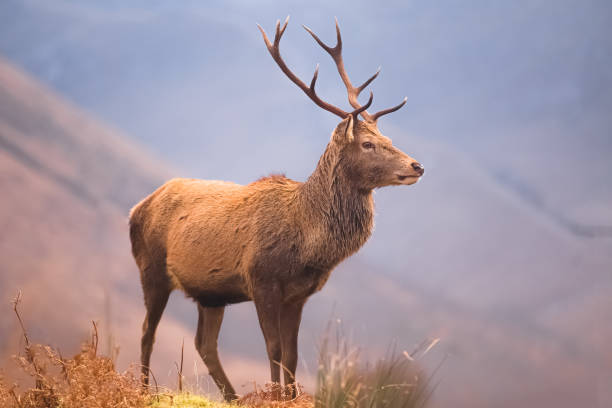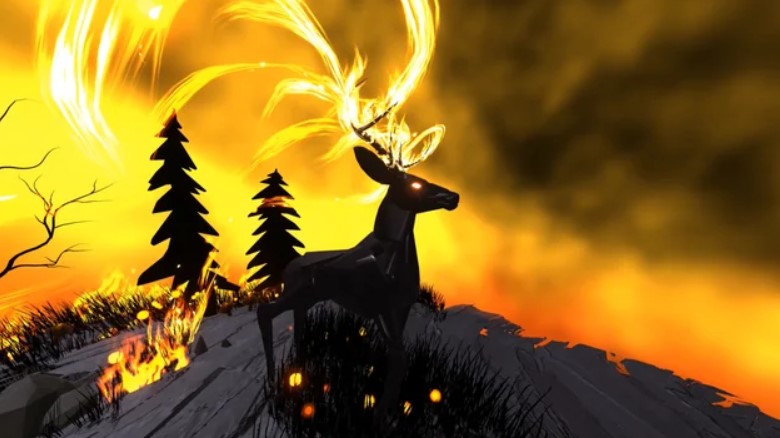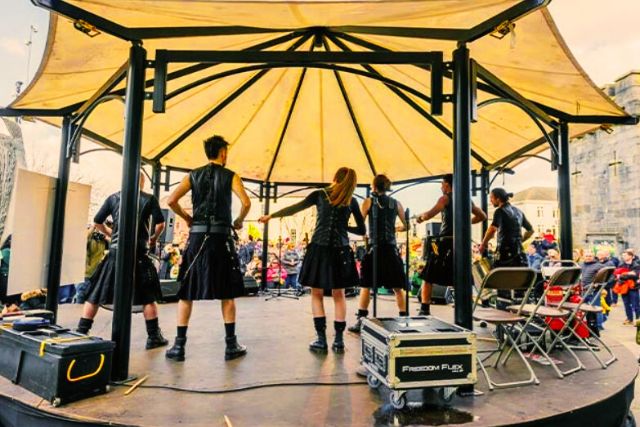In the rich tapestry of Scottish culture, the majestic stag stands as a powerful symbol of strength, resilience, and nobility. Its ancient origins can be traced back to Scottish folklore and mythology, where it embodies qualities of leadership and royalty. This Content delves into the profound significance of the Scottish stag, exploring its representation in art, heraldry, and the collective consciousness of a nation.
Embark on a journey through time and uncover the captivating symbolism behind the Scottish stag.

The Ancient Origins of Scottish Stag Symbolism
While the exact origins of Scottish stag symbolism remain a subject of scholarly debate, there are several theories that shed light on its ancient roots. One theory suggests that the stag hunt in Scotland played a significant role in the development of this symbolism. The stag, known for its strength and agility, was seen as a symbol of power and nobility. Its ability to elude capture during the hunt made it a revered creature in Scottish folklore.
Additionally, the stag held a spiritual meaning for the ancient Scots. It was often associated with the Cernunnos, the Celtic god of fertility, wealth, and the hunt. The stag symbolized the connection between the divine and the natural world, embodying qualities of virility and abundance.
In Scotland, the stag symbol can be seen in various forms of art and heraldry, representing the country’s rich cultural heritage. The stag is often depicted with majestic antlers, symbolizing strength and dominance. It has become an iconic symbol of Scotland, embodying its wild and untamed landscapes.
Interestingly, in some traditional Scottish customs, the stag was burned as part of a ritual known as ‘burning the stag.’ This practice was believed to bring good luck and prosperity to the community. The stag’s sacrifice represented the cycle of life and death, renewing the spirit of the land.

Stag Symbolism in Scottish Folklore and Mythology
Having played a significant role in Scottish folklore and mythology, stag symbolism in Scotland is deeply rooted in the country’s cultural heritage.
The stag, with its majestic appearance and antlers, has long been associated with various myths and legends in Scottish folklore. In Scottish mythology, the stag is often seen as a symbol of strength, nobility, and wisdom. It is believed to possess magical and protective qualities, representing the connection between the human and spirit worlds.
The stag is also associated with the Cailleach, the Scottish goddess of winter, who can transform into a deer.
In addition, the annual tradition of the Highland Games includes the sport of ‘tossing the caber,’ where participants throw a large pole resembling a tree trunk. This tradition is said to mimic the strength and agility of a stag.
The Stag as a Symbol of Strength and Resilience in Scottish Culture
The stag symbolizes strength and resilience in Scottish culture, embodying the indomitable spirit of the Scottish people. This majestic creature holds a special place in the hearts of Scots, representing qualities that have been admired for centuries. Here are three reasons why the stag’s symbolism resonates so deeply:
- Survival in harsh environments: The stag’s ability to navigate treacherous landscapes and endure harsh weather conditions reflects the resilience of the Scottish people, who have overcome countless challenges throughout history.
- Powerful presence: The stag’s imposing antlers and noble stature evoke a sense of strength and power. This symbolism reminds the Scots to stand tall and face adversity with determination.
- Adaptability and renewal: Just as the stag sheds its antlers and grows new ones, the Scottish people have shown remarkable adaptability and the ability to rebuild after difficult times.
The stag’s symbolism of strength and resilience seamlessly transitions into the subsequent section about the noble stag’s symbolism of royalty and leadership in Scotland.
The Noble Stag: Symbolism of Royalty and Leadership in Scotland
A noble stag holds a significant role in Scottish culture, symbolizing royalty and leadership in Scotland. The stag has long been associated with the Scottish monarchy, representing strength, grace, and majesty.
In ancient times, the hunt for the stag was considered a test of a leader’s prowess and ability to provide for their people. The image of the noble stag was often used in royal insignia, representing the power and authority of the Scottish kings and queens.
Even today, the stag is a prominent symbol of leadership in Scotland, adorning the coats of arms of many Scottish clans and appearing in various forms of Scottish art and literature. The regal presence of the noble stag continues to embody the ideals of royalty and leadership in Scottish culture.
Stag Symbolism in Scottish Art and Heraldry
Depicting the grace and power of the noble creature, stag symbolism permeates Scottish art and heraldry. The rich history and cultural significance of the stag in Scotland have inspired artists and heralds to incorporate its imagery into their works.
This symbolism elicits a range of emotions in the audience, including:
- Awe and admiration: The majestic presence of the stag in paintings and sculptures evokes a sense of wonder and reverence.
- Strength and resilience: The stag’s antlers, often depicted in Scottish art, symbolize power and endurance, representing the ability to overcome challenges.
- Connection to nature: The stag is often portrayed in natural landscapes, highlighting Scotland’s rugged beauty and the harmony between humans and the natural world.
Through these artistic representations, the stag becomes more than just a majestic animal; it becomes a symbol of Scottish heritage, strength, and the enduring spirit of the land.
Frequently Asked Questions
What Is the Average Lifespan of a Stag in Scotland?
The average lifespan of a stag in Scotland is approximately 10-12 years. Factors such as habitat, availability of food, and predation can influence their longevity. It is important to note that this answer focuses solely on the stag’s lifespan, excluding any discussion of Scottish Stag Symbolism.
Scotland is home to several species of stags, each possessing unique characteristics and adaptations. Understanding the diversity of these majestic creatures is essential in appreciating their significance in Scottish culture and the broader natural environment.
Stags are considered sacred or revered in various cultures worldwide, not limited to Scotland. Their symbolism often includes attributes such as strength, agility, and nobility. Examples include the Celtic culture, where stags represent fertility and the hunt, and Norse mythology, where stags are associated with Yggdrasil, the World Tree.
The portrayal of stags in Scottish art and heraldry has evolved over time, reflecting the cultural and historical changes of the nation. From ancient Celtic depictions to modern interpretations, the symbolism and significance of the stag have been reinterpreted and adapted to suit the prevailing artistic and societal trends.
There are several specific rituals and ceremonies associated with stags in Scottish culture. These include the “stag hunt” tradition, where men would gather to hunt stags, and the “stag feast,” where the meat of the stag would be enjoyed during a celebratory meal.



